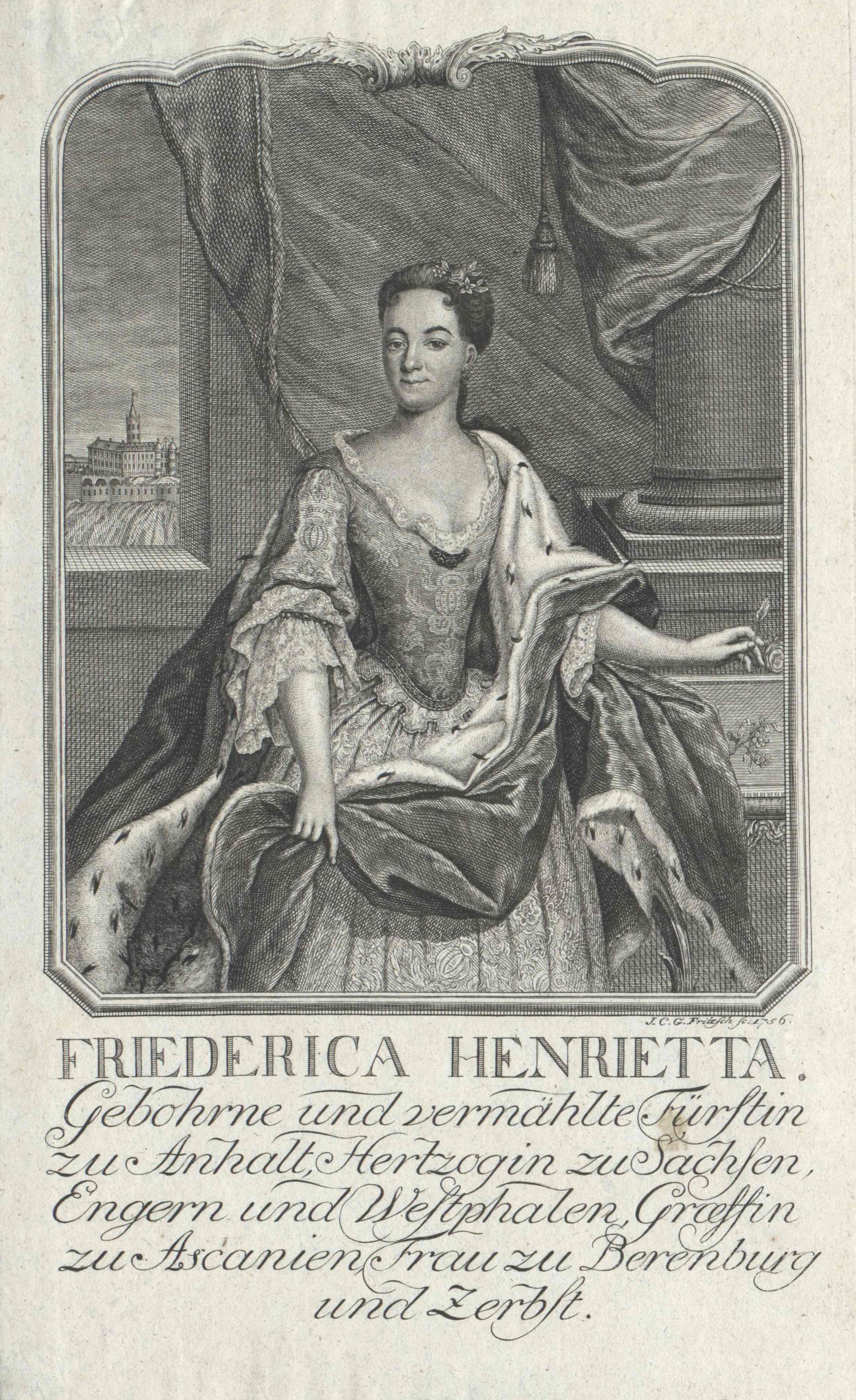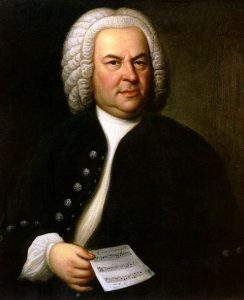
On April 22, 1723 – 296 years ago today – the 38-year-old Johann Sebastian Bach was elected music director and cantor of St. Thomas church in Leipzig. Despite the fact that it was a prestigious position, Bach felt scant enthusiasm for the job and considered it a step down from his previous position. Bach’s reticence was shared by the Leipzig authorities’ reticence towards Bach, who was – in fact – their fourth choice for the job. Bach and Leipzig were “a marriage of convenience” and therein lies the story for this week’s Music History Monday.
Sebastian Bach (as he was known to his friends, family, colleagues and acquaintances) was born on March 21, 1685 in Eisenach, Thuringia, in what today is central Germany. He was the eighth and last child (of five surviving children) born to Elisabeth and Johann Ambrosius Bach.
To say that Sebastian Bach had a genetic predisposition towards music is like saying that giraffes are genetically predisposed to necking. For generations, music had been the Bach family trade. In 1735, the 50-year-old Sebastian Bach compiled a list of forty-two family members who had been professional musicians during the previous 150 years. It was a “short list”, as the New Grove Dictionary of Music and Musicians today lists 85 musical Bachs spanning the nearly 300 years from 1555 to 1846.
Writing in a biography published in 1802, Bach’s first biographer, Johann Nikolaus Forkel (1749-1818), described a typical Bach family gathering this way:
“As it was impossible for them to all live in the same place, they liked to get together at least once a year, probably in Erfurt, Eisenach or Arnstadt. Their favorite occupation during these gathering was to engage in some form of musical activity. Naturally enough, as they were all choirmasters, organists or town musicians, connected in some way with the church, and also since custom demanded a religious framework, they would start with the singing of a chorale. This solemnity, however, would soon give way to more light-hearted music-making, which was often in strong contrast with what had gone before. They liked to sing folksongs of a light or sometimes ribald nature, singing two or more [folksongs] simultaneously and extemporizing upon them so that choral harmony resulted. These quodlibets, as they called them, not only made the performers laugh heartily, but anyone who happened to hear them was irresistibly affected by laughter too.”
We’re glad to know that some members of the Bach family “laughed heartily”, because our impression of Sebastian Bach is one of grim seriousness, though in fact, we know little about Bach the man. The well-known Elias Gottlob Hausmann portrait of the 61-year-old Bach at the top of this post is one of the very few indisputable images of him that have come down to us. It shows us a man with sharp, calculating eyes, an outthrust chin, and a severe mouth with ever so slightly twisted lips. Is this what passed for a smile from Bach? Or perhaps it’s a sneer of disdain, a sign of resentment for having to sit still in an artist’s studio while there was important work to do?
Whatever; it’s the face of a most intelligent man who knew his worth; a stubborn, unyielding, sometimes irascible guy who nevertheless loved his wives (two in number) and children (20 in number); a man who liked his tobacco, food, and drink (beer and brandy); someone who’d been around the block more than a few times and who did not suffer fools (or his employers) gladly.
Bach’s provincial career was centered on the churches, courts, and municipalities of his native central Germany, a career that was an exercise in disappointment management. In Weimar, in 1717, the 32-year-old Bach was passed over for a promotion in favor of a nonentity named Johann Wilhelm Drese. Mad as hell, Bach tendered his resignation. Accused of insubordination, he was tossed into jail for four weeks (see Music History Monday for November 6, 2017).
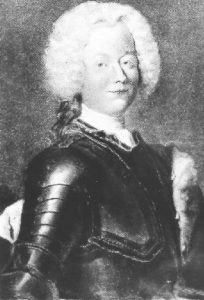
On his release on December 2, 1717, Bach took the job of Kapellmeister (“chief-of-music”) for Prince Leopold of Anhalt-Cöthen. Despite the fact that the principality of Anhalt-Cöthen was a small backwater, Bach initially loved the job, thanks to his boss and the nature of his employment. His boss, Prince Leopold, was a total music-freakazoid. Leopold (1696-1728) – who was just shy of his 23rd birthday when Bach came to work for him – loved his Bach, and Bach loved his prince. In a most uncharacteristic bit of praise for a nobleman, Bach later said of Leopold:
“The prince not only loved music, he understood music.”
The position under Leopold at Anhalt-Cöthen was Bach’s dream job. Since Leopold was Calvinist, only the simplest, unaccompanied singing of hymns took place in his chapel. As a result, Bach’s gig was 100% secular: there was no religious music to compose, no church or chapel organ to have to play, and no religious authorities to please; just the prince.
And oh, was the prince ever pleased! With Bach at the helm of his musical establishment, Leopold spent a fortune putting together what was, in all likelihood, the best court orchestra in Europe. He bought a large number of excellent musical instruments and authorized Bach to create a comprehensive library of musical scores.
Bach responded to all of this like a man on fire. It was during his six years in Anhalt-Cöthen that he composed the great bulk of his concerti, including the six Brandenburgs and his violin concerti. He composed two (of his four) orchestral suites; his sonatas and partitas for solo violin, solo cello, and violin and harpsichord. He composed his 2 and 3-part Inventions; the great bulk of The Well-Tempered Clavier, Book One; and various miscellaneous chamber works and secular cantatas.
Sebastian Bach and Prince Leopold of Anhalt-Cöthen were an artistic partnership made in heaven, and Bach could only pray that he had found a job for life.
Alas, disappointment and disillusionment were waiting just around the corner, like Lego pieces strewn across the floor of a darkened room. In 1719, Leopold was forced to cut his musical expenditures when neighboring Prussia shook him down for protection money, presumably to help with military expenditures.
Personal disaster then struck as well. On May 27, 1720, the 35-year-old Bach left town with the prince for a visit to the spa at Carlsbad; as the prince’s boombox was on the fritz, the prince wanted to have his musicians around for his entertainment. Bach’s obituary describes what happened when he returned home in July of 1720:
“After 13 years of happy marriage with his first wife [Barbara], he was met by grievous sorrow when, upon his return to Cöthen from Carlsbad, he found her dead and buried although he had left her hale and hearty upon his departure. The first news of her falling ill and then dying was given him as he entered his house.”

The deeply grieving, newly-minted single father was left with four children to take care of, ages 5 to 11.
The final nail in the coffin-lid that was Bach’s job at Anhalt-Cöthen was driven home on December 11, 1721 when Prince Leopold married his cousin Frederica Henriette (1702-1723) of Anhalt-Bernburg. Frederica Henriette did not care for music. Neither did she approve of the amount of money her hubby the prince spent on his hobby, nor his relationship with “that man” (meaning Bach).
The writing was on the wall big as a graffito on a highway overpass, and the still grieving Bach began casting about for a new position. By December of 1722, he had resigned himself – reluctantly – to applying for a job as cantor (music director for the churches and municipality) of Leipzig, a job that had been open for over six months.
The commissioners in Leipzig had had a devil of a time filling the job, despite its prestige. The problem was the job description, which was absurd even by the standards of the day. The cantor was responsible for the education of the students at the St. Thomas School, which had been supplying the churches of Leipzig with singers since 1212! That meant teaching the little sweethearts music theory, singing, instrumental performance and Latin. The cantor was also the music supervisor and in-house composer for the four major churches in Leipzig. The cantor was also the music director for the city of Leipzig and had to organize the music for such “official” ceremonies as council elections, homage ceremonies for visiting dignitaries, memorial ceremonies for dead dignitaries, etc., etc.!
For all of this, the base salary was, well, crap: a spartan, rent-free residence and 100 florins a year (roughly $16,000 today; for our information, Bach’s base salary at Cöthen had been 400 florins per annum; roughly $65,000 today).
Talk about “you can take this job and shove it!”
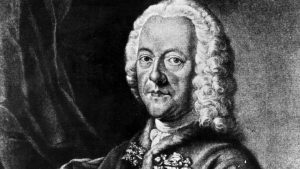
Georg Philipp Telemann (1681-1767), the newly appointed Cantor of Hamburg was offered the job. He managed to obtain all sorts of concessions (including not having to teach Latin) from Leipzig, then went back to Hamburg and negotiated a that much sweeter deal there!
STEE-RIKE ONE!
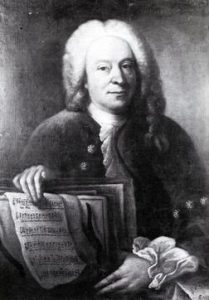
Johann Christoph Graupner (1683-1760), the Hofkapellmeister (court chapel master) of Darmstadt, was the next candidate, but the Prince of Darmstadt refused to release him.
STEE-RIKE TWO!

The next candidate was Johann Friedrich Fasch (1688-1758), the Kapellmeister of Zerbst. But Fasch refused the post when he discovered that he would be expected to teach Latin.
STEE-RIKE THREE!
Enter Sebastian Bach, who reluctantly applied for the job. The Leipzig authorities were not happy about having to set their sights so low – on a mere organist without a university degree – after entertaining the possibility of hiring Telemann, Graupner, and Fasch! (The Burgermeister of Leipzig, Abraham Christoph Platz complained, in writing, that since the town could not hire its favorite candidates, “we had to settle for a mediocre one – Bach!”)
296 years ago today the authorities in Leipzig grudgingly elected Bach to the position of cantor. He signed his contract 13 days later, on May 5, 1723. It was a marriage of convenience for both Bach and Leipzig, and it was not destined to be a happy marriage. Bach rarely got along with the two dozen-plus rectors, bureaucrats, and politicos that were collectively his bosses in Leipzig. His 27-year tenure – from 1723 until his death in 1750 – was marked by an almost endless series of battles over teaching schedules, money, personnel problems and artistic issues.
Painful Postscript (as if the above isn’t painful enough!):
On April 4, 1723 – 18 days before Bach was elected Cantor of Leipzig – Frederica Henriette, the wife of Prince Leopold of Anhalt-Cöthen, died at the age of 21. A distraught Prince Leopold begged Bach to remain in Anhalt-Cöthen. But Bach had made up his mind and thus, for him, there was no going back. On April 13, 1723, ten days after the death of his wife, a now doubly bereaved Prince Leopold signed Bach’s dismissal papers. He would follow his young wife to the grave just 5½ years later, at the age of 34.
For lots more on the life, times and music of Sebastian Bach, I would humbly direct your attention to my 32-lecture Great Courses survey, Bach and the High Baroque.
Listen on the Music History Monday Podcast
Podcast: Play in new window
Subscribe: Apple Podcasts | Spotify | Pandora | iHeartRadio | RSS | More

